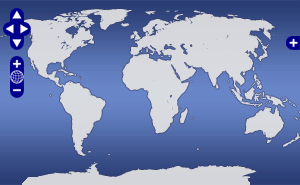Southwest Indian Ridge mantle Bouguer and residual mantle Bouguer gravity anomaly data (netCDF format) between 61°-67°E
Off-axis geophysical surveys provide a 26-m.y.-long record of axial tectonic and magmatic processes over a 660-km-long and melt poor portion of the ultraslow Southwest Indian Ridge. The data reveal a new type of seafloor (the smooth seafloor) that forms at minimal ridge melt supply, with little or no axial volcanism. The gravity data were primarily collected during Marion Dufresne cruise 135 in 2003 (https://campagnes.flotteoceanographique.fr/campagnes/3200080/). Details of the processing of the gravity data are provided in the Supplement Material section of Cannat et al. (2006). The residual mantle Bouguer anomaly (RMBA) was calculated from free-air ship gravity data by first subtracting the effect of topography of a constant crustal thickness (3.4 km; the mean seismic crustal thickness determined near 66°E (Muller et al., 1999)), constant density (2700 kg/m3) crust, and then the effect of upper mantle cooling with age (using magnetic anomaly picks). The thermal correction model assumes a simple square root of age mantle cooling law (Parsons and Sclater, 1977). The thermal model was cut off 25 km off-axis, and a constant temperature gradient used in the intervening axial region. The data files are in GMT-compatible netCDF grid format. The "mba" grid is the mantle Bouguer anomaly data and the "rmba" grid is the residual mantle Bouguer anomaly grid.
Cannat, Mathilde
Investigator
IPGP
Quality
2
The data have been processed/modified to a level beyond that of basic quality control (e.g. final processed sonar data, photo-mosaics).
License
Data Files
References
Data Citation Information
ISO/XML Metadata
Expand

 Map View
Map View
